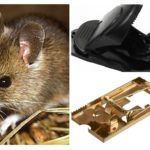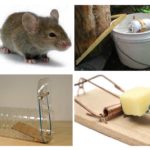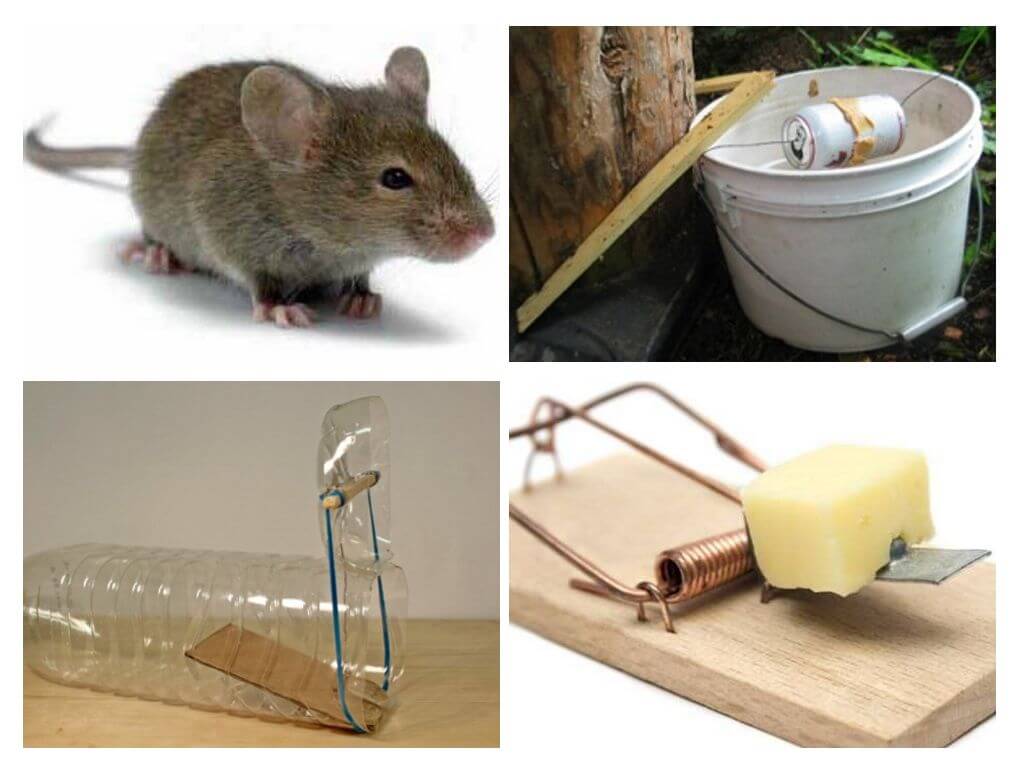How to put a mousetrap
- Mousetrap
- Mouse Trap Types
The fight against mice has been going on since time immemorial, the very first “weapons” were mousetraps. Ready made mouse cells sold in specialized stores, made homemade mouse traps. It remains an important question, how to put a mousetrap so that rodents fall into a trap.
Location selection
The presence of mice is indicated by a specific smell, feces, sawdust, dust from wood, plastic, holes in sacks of grain, gnawed vegetables, and fruits. It is advisable to determine the location of the hole, the nest, to observewhere the pests come from.
Mice always move on the tried and tested routes. Marked feces, urine. They recognize their traces by smell, color, as in the dark urine glows. If you succeed in determining the trajectory, you don’t need a big trick - they set a trap against the movement, and that’s just the end of it.
In other cases, you just need to install the mousetrap in the intended places of movement. Rodents like to run on baseboards, under the walls, crawling on the windowsills, cabinets.
Important!
The mouse will not fall if it is noisy in the room, it makes no sense to construct a mousetrap during the day. The war is conducted in the dark when pests activate their activity. Exception - if the room is always twilight.
Trap types
Instructions for using a mousetrap depends on its design, as well as the place where you have to wage war.
- The trap of plastic bottles can be used in the garden, garden, cellar. The operating manual does not contain specific rules. It is enough to dig into the ground, or fix it under a slope near the steps, shelves. When a mouse enters a homemade mousetrap, it remains inside, it cannot get out because of slippery walls, which are pre-lubricated with vegetable oil.
- It is not necessary to put a trap out of a bucket with water under the wall, it can be done in the middle of the room. To get the mouse into the mousetrap, you need to use a fragrant bait, try to remove other food supplies from the house or room. Grass, leaves, straw, and husk are laid over the water. Add a little vegetable oil, scatter grain, seeds. A wand is substituted for the bucket; it will act as a ladder.
- Mechanical trap is convenient because it kills a rodent immediately or fatally injures. How to charge a mousetrap, there is an instruction. Set in the selected location, fasten the bait. Move the pin away from the spring. Bend the bracket, fix.
On a note!
When using mechanical or electric mousetrap the location of the structure must be periodically changed. Otherwise, the mouse will learn a new path, they will not come across.
The sticky trap is particularly popular. Special substance is applied on a dense basis - a cardboard, a piece of plastic, an oilcloth, plywood. Fixed on a hard surface. Glue for mice possesses instant fixation, does not dry within 1-2 weeks from the moment of application. The substance is applied with a solid line with an interval between 2 cm stripes. To catch mice, a mousetrap of 10 * 20 cm is enough. The trap is placed in those places where rodents were seen. Preferably near the hole, the nest.
On a note!
Sticky mousetrap is used to fight rodents in the garden. Treating the bark of trees at heights up to 50 cm from the surface of the earth. The trap protects against rodents, harmful insects.
Useful tips
If the mouse does not come across - an error is made somewhere. Instructions for use of mousetraps:
- Rodents love the twilight, but run into places where the light falls. You can set a mousetrap. Direct a flashlight at it with a muffled light.
- To catch the mouse, you need choose the right bait. Small rodents love cheese, seeds, grain, cereals, bread, biscuits. Sausage, meat, bacon are eaten, but without much enthusiasm. This bait is more suitable for rats.
- Check the mousetrap often. Caught dead animal scares the rest, the mouse will begin to explore another territory. A live mouse in a trap will warn others of the danger of a restless squeak.
If there are many mice in the room, you need to alternate several different methods of struggle. With a large army of rodents under the force to cope poison for mice.









